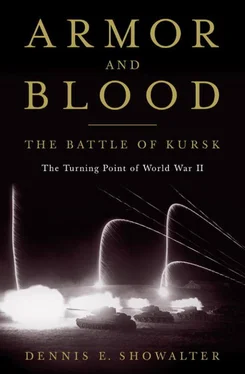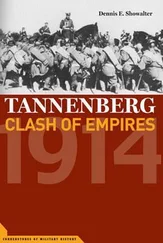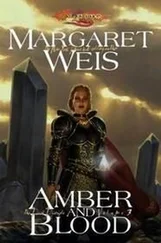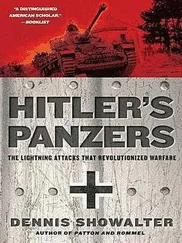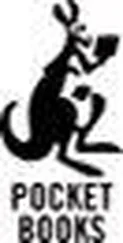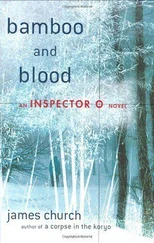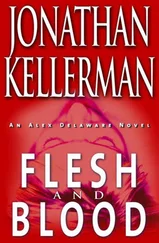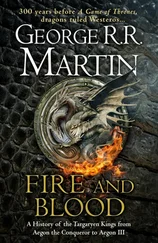Divisional allocations of guns and automatic weapons increased, but the bulk of supporting assets remained pooled at army level, assigned as needed. Throughout 1942, Soviet rifle formations were seldom anywhere near their authorized numbers. In theory and practice, they were regarded as expendable: to be kept in the line until reduced to cadre strength, then either broken up or completely rebuilt. Shock troops or cannon fodder? It depended on perspective. Nineteen-year-old Boris Gorbachevsky entered the army in January 1942. He first saw combat in August, in front of Rzhev, in a mixed-bag rifle company of “Russians, Ukrainians, Cossacks, and Uzbeks…. We now no longer belong to ourselves; we have all been seized by the incomprehensibly savage element of battle. Shell bursts, shell fragments, and bullets are sweeping away the infantry lines…. The remnants of former companies and battalions have turned into a senseless mass of onward-charging, desperate men.” Like so many Red Army attacks in 1942, this one collapsed in a welter of blood and bodies. Wounded and hospitalized, Gorbachevsky encountered his regiment’s Communist Youth organizer, also a casualty: “How are we fighting? Everyone from the army commander down to the company commander … drives the soldiers forward into the chopping machine. And the result! We don’t have enough paper for all the funeral notices!”
Yet many a veteran Landser has recalled that for all the high-tech terrors of the Eastern Front, the T-34 tanks, the Shturmovik attack planes, the Katyusha rockets with their eldritch scream, nothing was worse than the deep-throated “Urraa! Urraa!” accompanying the charge of the Red Army’s infantry.
The armored force, prime target on all of Barbarossa’s fronts, was eviscerated in a matter of weeks. On July 15, 1941, the elephantine mechanized corps were disbanded. The signature unit became the tank brigade: initially around two thousand men and ninety-three tanks, two-thirds of them light T-60 tanks, whose 20 mm popguns and thin armor made them meat on the table for the panzers. Even that low strength proved materially unsustainable and beyond the capacity of most commanders. In December, the brigade was cut back to eight hundred men and forty-six tanks, about the strength of a Western battalion.
These small formations made predictably little headway in the winter counterattacks. In March 1942, the first four tank corps were authorized. Between April and September 1942, twenty-five more joined the order of battle. Their final configuration on paper was three tank brigades and a motorized rifle brigade: just short of ten thousand men and 165 tanks. A third of those tanks were T-60s. Their more complex stablemates, the medium T-34s that became the Red Army’s signature armored vehicle, were still entering mass production.
The 1942 order of battle remained the standard tank corps framework for the rest of the war. Light tanks were replaced by T-34s in a structure that was armor-heavy by developing Western standards, lacking both artillery to deal with German infantry and antitank guns and infantry to hold the ground it might gain. The former shortcoming would eventually be modified by increasing the number of turretless assault guns, the latter by creating mechanized corps built around truck-borne infantry. But the tank corps’s structure was a function of its mission: exploiting the breakthroughs made by infantry- and artillery-heavy “shock forces” as described before the war.
That mission was easier defined than accomplished. The new tank corps underwent their first serious test in the Soviet Kharkov offensive in May 1942. Over thirteen hundred armored vehicles were concentrated for the attack. Early successes gained by mass could not be sustained against a flexible German defense built around coordinated air and armor strikes. The tank corps lagged too far behind the fighting lines to intervene quickly, then kept going as a German counterattack closed off the neck of the salient they formed.
A similar, albeit smaller-scale, armored debacle took place in the Crimea, where a single understrength panzer division took the measure of superior forces employed piecemeal. As Russian survivors fought delaying actions on the long retreat to the Don River, Russian staffs emphasized surprise, exploitation, and improved logistic support for future offensives. All of these appeared in the Stalingrad offensive. The rally and the counterattack orchestrated by Manstein showed that the Germans still mastered the armored battlefield. Mastered—but no longer dominated. Beginning with the new year, frontline commanders were reporting unpleasant tactical surprises. Red armor was no longer following its familiar pattern of engaging German strongpoints and exposing itself to paralyzing local ripostes by the panzers. Instead the tankers were bypassing the “hedgehogs,” driving past them deep into the German rear. Lower-unit leadership was becoming more flexible, more situationally oriented.
Four hundred thousand tankers were trained during the war. More than three hundred thousand died in battle—a ratio matching the often-cited losses of the Nazi U-boat service, but in numbers ten times greater. The execution squads of the security police, the People’s Commissariat for Internal Affairs, or NKVD, were seldom to be found riding with the tankers. And the fatalism characteristic of the Red Army for almost a decade was beginning to develop among the tank crews into a determination, still unfocused but increasingly powerful, to take as many Hitlerites as possible along with them.
The armored force attracted quality recruits—country boys who had dreamed of driving tractors for the machinery collective, factory workers attracted by the technical and mechanical aspects: socialist modernization on treads. Russia’s military heritage included elements other than brute force. It had a raiding culture as well, a concept of freewheeling mobility dating back to the Cossacks of the Zaporozhian Sich, the flying columns that devastated Napoleon’s army during its retreat from Moscow, the mounted buccaneers of Semyon Budenny’s Konarmia (Cavalry Army) during the Russian Civil War. Given the right catalyst, a Red Army tank corps was a potentially lethal compound.
The Red Army was also developing a supporting infrastructure—most significantly in its artillery. Guns had been important in the Russian army since the eighteenth century. Stalin would call artillery “the Red god of war.” And here if anywhere, mass was dominant. Western armies emphasized fire mobility. The Soviets emphasized tubes. The Red Army lacked the electronics and the technicians to implement a Western-style approach. Decentralization was in any case not a part of Soviet principle or practice. Guns, on the other hand, were easier to manufacture than tanks, and heavy mortars were even simpler than conventional artillery pieces. By October 1943, there were enough of them that Stavka authorized twenty-six artillery divisions, each with over 200 guns and howitzers plus 108 heavy (120 mm) mortars. At the same time, four rocket-launcher divisions were created. By the end of 1943, there were seven, each able to fire a salvo of over 3,400 rockets.
The effect was an ability to saturate a battle zone in the fashion attempted by the Allies on the Western Front in 1916–17. It was as sophisticated as a baseball bat to the kidneys, and just as effective. Even when the guns were deployed in forward, exposed positions, German counter-battery fire and air strikes (when these were available) were simply absorbed by the sheer number of targets. Artillery commanders were responsible to artillery superiors, creating a chain of command and control that enabled artillery to be used independently, without particular and changeable commitments to the infantry and armor. The potential of the adjusted system was only marginally apparent during the Stalingrad campaign. At best it had its limits. Against stationary targets or massed formations, it could have effects prefiguring those later projected for a tactical nuclear bomb. The best counters were dispersion, mobility, flexibility. At Kursk the Germans would deny themselves all three, and Soviet gunners would make them pay.
Читать дальше
